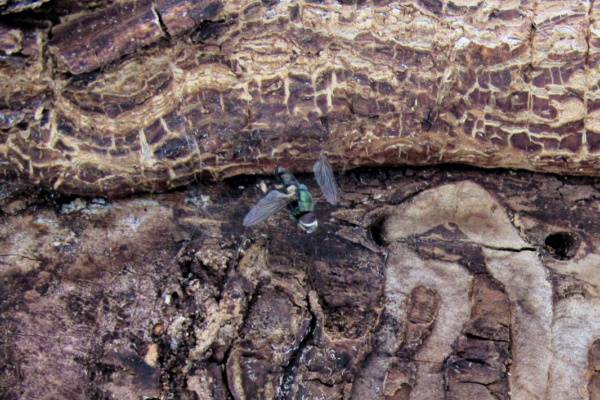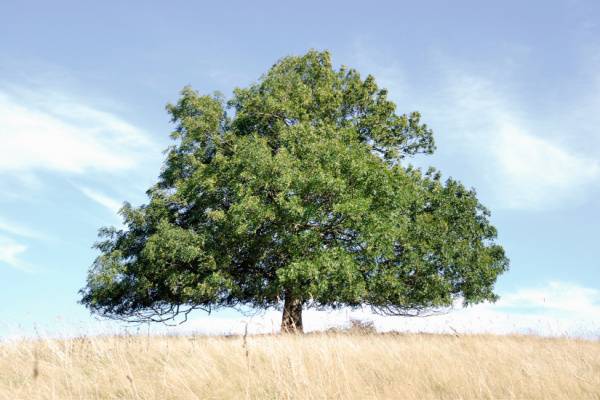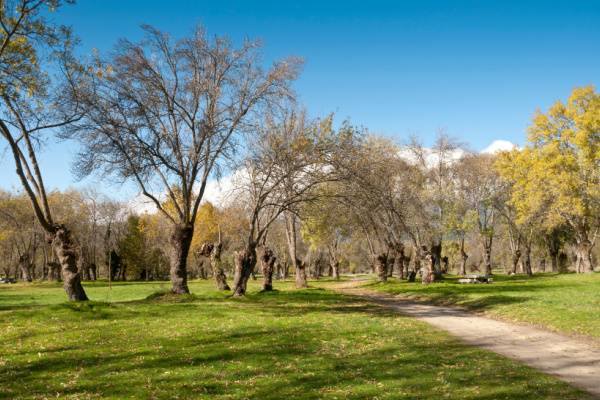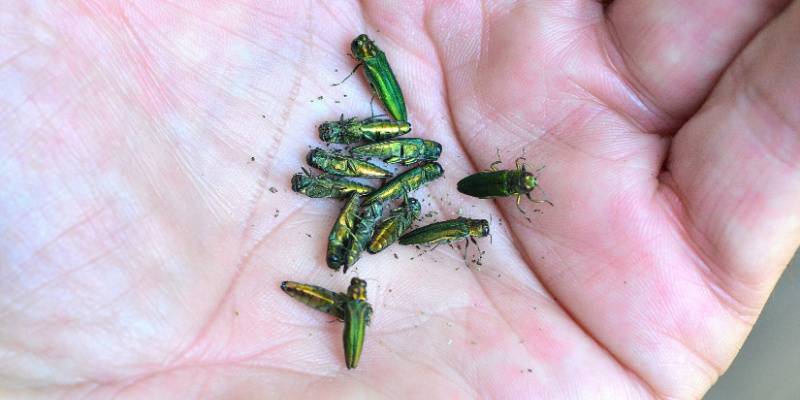This summer, OSU Extension Service released a statement announcing the Emerald Ash Borer (EAB) has been detected in the state.
Unfortunately, this news confirmed what we feared was coming. The emerald ash borer has decimated ash stands in the eastern United States.
Consequently, this small green beetle, threatens entire habitats in the region west of the Cascade Mountain range.
What is the EAB?
Emerald ash borers are small, metallic green beetles, reaching only a half-inch in length at full maturity.
Adults emerge in May and lay their eggs in the cervices of the tree bark.
After hatching, the larvae feed on the vascular cambium just beneath the bark.

Hundreds, and sometimes, thousands of these larvae feed on the tree. Their presence interrupts the flow of sugar between the leaves to the roots. Then they effectively starve the tree.
Often signs of infestation are first seen with canopy die-off.
Upon closer inspection of the tree, D-shaped holes in the bark may be observed. That's where the adult beetles have borrowed out.
Once emerald ash borers settle in, it will take just 2-5 years to kill a tree. Over 100 million trees have been lost to these beetles since they were first detected near Detroit, MI in 2002.


Can EAB Be Stopped?
Because of their potential for habitat destruction, many attempts have been made to eradicate, or at least, to contain EAB. Unfortunately, all efforts over the past twenty years have proven unsuccessful.
As of now:
- Five species of ash is the eastern U.S. have been listed as “critically endangered”.
- Green, white, blue, black, and the pumpkin ash are all close to extinction.
- The Oregon ash is already known to be vulnerable to EAB, and will not be able to fight it off.
Sadly, the large population of ash trees, an important piece of the region's forest ecosystem, is dying off. As previously noted, there appears to be no way of stopping it.
With this in mind, Oregon has led the way for western states to prepare. Together with a multi-agency program, one million seeds of the Orgon ash have been collected and stored for later use.
Then researchers hope to develop an EAB-resistant strain of the Oregon ash, and one day breed them for reforestation.
What About EAB in Urban Areas?
While there is a list of treatments approved for individual ash trees such as what might be growing in your yard, they are intensive and must be performed at least twice a year.
It seems homeowners would be prolonging a battle they can’t win to save just few trees. It is recommended homeowners and developers begin planting other hardy species to ensure the health of the urban canopy in Oregon.
Anyone collecting ash wood for firewood or for woodworking should cover the lumber and kiln dry it to kill off any bugs living in it. Fresh cut wood should not be transported long distances as it could cause further spread. If you find EAB, you are encouraged to report it.
Get more information on EAB in Oregon.
Protect Your Property with Pest Control Services
Routine pest control is an important way to stop pest infestations in the first place.
For this reason, your Croach® technicians specifically look for signs of dangerous or invasive species, like the emerald ash borer.
Call Croach® for a free estimate, protect your property, and help us stop the spread of emerald ash borer in the Pacific Northwest.


